The Ministry of Defence has confirmed that the construction of the Royal Navy’s new Type 31 frigates is progressing well, with the lead ship HMS Venturer approaching a major milestone.
Responding to a Parliamentary Written Question from James Cartlidge MP (Conservative – South Suffolk) on 28 April, Minister of State for Defence Maria Eagle stated that “the Type 31 programme has made significant progress, with the first frigate, HMS Venturer, nearing structural completion and expecting to be launched later this year.”
The update highlights that work is advancing not only on HMS Venturer but also on subsequent vessels in the class. “HMS Active, the second in class, is also progressing well,” said Ms Eagle, adding that construction on the third frigate, HMS Formidable, is underway following the steel-cutting ceremony held in October 2024.
The Type 31 class, known officially as the Inspiration-class, is intended to deliver a new generation of general-purpose frigates to the Royal Navy, providing flexibility for operations ranging from maritime security to warfighting alongside allies.
The project remains central to the government’s efforts to expand the Royal Navy’s surface fleet and support the UK’s domestic shipbuilding industry, with construction taking place at Rosyth under Babcock International.
Babcock to upgrade military capabilities of Type 31 frigates
Recently, we reported that Babcock had secured a new contract worth approximately £65 million to deliver the Capability Insertion Period (CIP) for all five Type 31 frigates being built for the Royal Navy.
The CIP phase will introduce a series of capability upgrades to the vessels, enhancing their operational effectiveness beyond the baseline design and build specification. These upgrades will be integrated, tested, and refined at Babcock’s Rosyth facility in Scotland, where the Type 31 ships are currently under construction.
Paul Watson, Arrowhead Managing Director at Babcock, said: “This new contract provides additional military capability for the vessels beyond the initial design and build contract. The detailed knowledge that we have of these ships, combined with our forward-thinking design, will enable an efficient installation and through-life support of the systems and equipment.”
Watson added: “As the design and build partner, Babcock is expertly placed to provide the know-how and technical information to deliver these important activities in the development of the ships through the CIP. We are proud of the role we play alongside our customer – their mission is our mission.”
The contract was awarded by Defence Equipment and Support (DE&S), the Ministry of Defence’s procurement arm. Steven Perry, Type 31 Project Manager at DE&S, said: “We are pleased to have awarded Babcock the CIP contract for the Type 31 fleet. This contract will deliver capability upgrades that go beyond the vessel build specification, delivering Type 31 frigates to the Royal Navy that will ensure the UK remains at the forefront of global security.”
Babcock was initially awarded the Type 31 design and build contract in 2019. The company is delivering the Arrowhead 140 design-based frigates, which will form a key component of the Royal Navy’s future surface fleet. Designed for adaptability and global presence, the ships will be capable of operating alongside allies and fulfilling a wide range of missions worldwide.


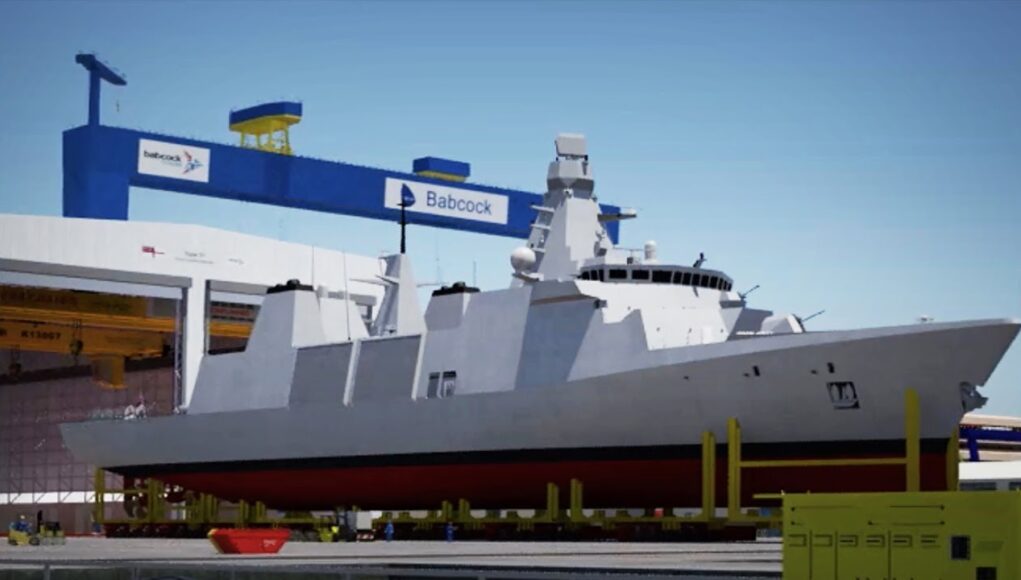
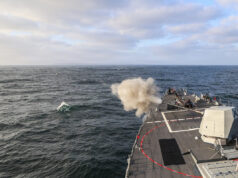
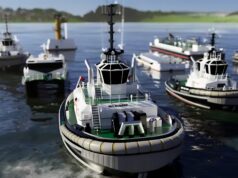
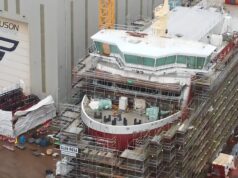
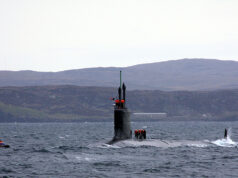
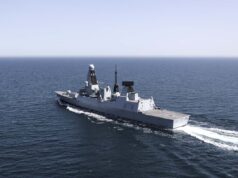
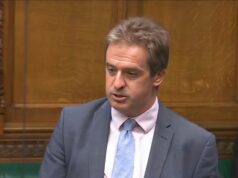
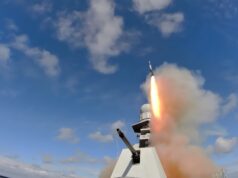
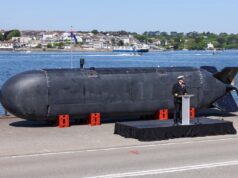
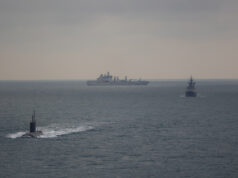
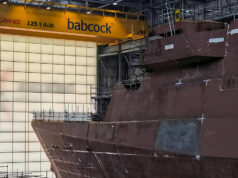

This is fantastic news, we should all be so very proud having 13 state of the art cutting edge World beating leviathans simply bristling with leading edge technology and incredible weaponry, no other country on the planet can compete with the UK when it puts it’s mind to it.
Rule Britannia.
God save the King.
Sarcasm?
….with a trowel
Going by some other comments of his, he might be being serious. All power to him, positivity is too rare nowadays!
A positive mindset brings peace and tranquillity in a World overflowing with hate and aggression.
Make love, not war.
Live long and prosper.
He’s very very positive.
🇬🇧 😀
When Britain Fi-i-i-irst at Heaven’s Command…!!
Any chance of an actual launch date?
I think we are all desperate for a fix of good RN news with at least another ship in the water.
Quite another thing when she actually starts trials…..
And even something else when she is accepted into the fleet…..
Hopefully looking forward eventually to 8 x T31. Minus the LPDs replaced perhaps with ‘strike frigates’ and retaining the B2 Rivers the RN would have more of a balanced fleet.
Good looking warship, with more capabilities added and expected, as the baseline fit seemed absolutely bare minimum just to be passed good to go by the bean counters! 3 more would be nice, relatively cheap and achievable.
At least 5 big hulls that can have bits bolted on were ordered.
Think how bad things would be by now if that hadn’t come to pass?
The most likely order we will see is three more of these then Labour can say the fleet is set to grow.
Box ticked.
Next problem is how to get to The Robertson Number = number of surface combatants.
I’m betting the number is 30.
Crewing 30 escorts would be difficult. I’d rather see money invested into that at the moment, and to accelerating production on those ships already ordered.
By ‘that’, I mean improving recruitment. It was a bit unclear!
Hi leh..the 30 would not be until mid 2030s and a thing essentially created by cheating and turning the MRSS into surface combatants and not retiring the T45 after they build some T83 ( as everyone knows it was a complete cock up to go down to 6 AAW destroyers and the RN needs 8-9 to generate 3 AAW vessels at anyone time).
Remember ship building and crewing are essentially to completely different funding processes..one is capital funding ( one of large contract) the other is an ongoing annual cost.. you should never use capital funding for annual costs like staffing….if I gave a provider say a million capital funding for a program..I would never let them use it for staffing… as it’s one off and staffing needs an annual budget line,
What’s the definition of a ‘surface combatant’? If you include the batch 2 Rivers, which you could argue are an essential part of a balanced fleet, that would imply another 6 destroyers / frigates. Types and roles TBA??
I don’t think the Rivers count as combatants however. A vital part of the fleet, but not a combatant.
8 T26.
8 T31.
6 T45.
6 MRSS.
No you would not consider the Rivers 2s as surface combatants, essentially the term surface combatant are cruisers, destroyers, frigates and corvettes, it’s a ship designed to fight not patrol.
“Their primary purpose is to engage space, air, surface, and submerged targets with weapons deployed from the ship itself”
From a future surface fleet ( mid 2030s onward) I suspect we will have the following
8 T26
7-8 T31
6 MRSS ( which is likely to end up with a GP frigate armament)
6 T45 ( which I suspect will keep going into the 2040s.. )
2-3 type 83. ( large 10,000-15,000 all singing all dancing AAW vessels that will essentially be stapled to a CBG)
Then I suspect in the 2040s the type 45 will be 1 for 1 replaced with a direct replacement. This is because the RN needs a very high end ASW vessel for the carriers and the new generation radars need a 10,000 to 15,000 ton hull, the RN cannot afford more than a handful of these and yet it needs in the region of 8-9 AAW ships..so it’s going to need to run a primary and secondary AAW escort.
Let’s hope for +5 on top of existing order add a laser on it and call them type 32s if we wish or just t31 batch 2 – keep the line going.
And maybe an additional T26 if ASW needs to be further strengthened? Hopefully plus the Norwegian T26 order.
Let’s hope for +5 on top of existing order add a laser on it and call them type 32s if we wish or just t31 batch 2 – keep the line going. We need to follow the shipping strategy that was outlined and keep for 15 years max .
I think BAE have offered Australia a AAW T26. Definitely doable and why not a couple for the UK?
Because we can’t afford them and we don’t have our next gen of AAW selected
I don’t think that the next problem is getting to the John Robertson numbers of surface escorts. it’s ordering the enablers to maximise what we already have and then expand. So more ASW Helicopters, IMHO we need to bite the bullet and renew / expand the AW101 numbers, and we either buy some more P8’s or MQ4c Triton.
Also it’s time to give up this madness about the FAA / RAF sharing the F35B it just doesn’t work, they need to order the next batch and enable the FAA to have 2/3 dedicated Squadrons drawn from a common pool. We have spent a fortune building 2 Carriers so we can have 1 in full service, but without a dedicated CAG with its own support staff we are just playing at it.
FAA cannot take on F35
The FAA could easily do so if the RAF staff currently operating the F35B were to transfer to the Navy, leaving the RAF itself to concentrate on land based air with all the rest of its establishment. This is similar to what happened in 1938 when the FAA was set up. My father was there, later to be first CO of 845 Squadron when set up in January 1943.
W-J-C, The FAA has neither the budget or resources to operate the F35b Fleet on it’s own. Arguably neither has the RAF, it is only because the Funding and resources are pooled that this capability is a reality.
The RAF and FAA aren’t ‘sharing’ F35B. Lightning Force is a truly joint force, with one Chain of Command, one pool of engineers and pilots. It is tasked to forward deploy air power EITHER from the carrier or from land, whichever is more appropriate.
What is really being highlighted is a misunderstanding about how the RN gets its tasking. This will hopefully be solved once and for all in SDSR if Strategic Command gets primacy. Basically, they have a golf bag of assets, they have outputs and they match assets to output.
There is no competition between the RN and RAF on who gets the F35 today.
Imagine if we’d ended up with the much smaller BAe offering and where now trying to cram a VLS system into it?
It could never have been anything other than a light patrol frigate, with no growth and little purpose..beyond patrol.
I imagine the RN knew what they were doing when they and the MOD selected what became Arrowhead 140. A lot of effort went into securing intellectual property rights and significant customisation e.g. enhancement to meet more demanding standards. And to the selection of Babcock and Rosyth of course. In many ways the T31 project marks a renaissance for the RN, if not the country to be honest. Babcock know they have to get it right, which explains why they are taking their time I think.
I wonder how much fitting out has been done..
That is the £££billion£££ question.
If she is launched and after a couple of months is trials ready that is wonderful.
If she is launched and a year or so of fitting out needs to be done that isn’t really modern ship building being executed.
Excuses can be made as to complexity etc but IRL you can additively test pipework integrity as each module is added in build.
Six years since the order was placed and we have a vague statement about a launch date and no idea on the level of fit out undertaken so far. Whilst we have had the Covid pandemic the resulting programme slippage should be known and therefore a target date for launch should be available.
I have concerns all is not well with this project and we maybe waiting a little longer than we think for these ships to enter service.
Arleigh Burke took four years from order to launch, without covid and with more fitting out done post launch so I don’t think this is exactly shocking.
Commissioning was due late 26 or early 27 so unless a lot of fit out has been done it seems this timescale will be missed but the question is by how much. Given the state of the Type 23s a slippage of 12 months or more will mean more costs to keep these ships going or incredibly even further reductions in numbers.
I have spent an entire career in construction and project programming is a key to any projects success so by now an accurate projection of key dates (+/-3 months) should be available with a mature design and procurement complete.
I would feel more confident ironically if we had confirmation that the project was running say 18 months late with the impact of Covid and the learning curve required by the project team quoted as the reasons. Fingers crossed the team are on top of the job.
Just from a pure speculation piont of view I do wonder if they will possibly create a much later batch of AAW variant T31 to complement a very expensive and large T83.. everyone knows the navy needs both an exquisite AAW destroyer with a new generation radar..( and with power and weigh needs that will need to sit in a 10,000 to 15,000 ton hull) and a mass of about 9 AAW destroyers ( to generate 3 at any one time)… it’s never going to afford 9 of the very large very high end T83 and it really only needs this for the CBG.. ( so 3 would do). That leaves 6 direct and cheapish replacements for the 6 T45 ( which I think will siolder on into the 2040s)… so maybe a possible replacement would be a T31 AAW, after all the T31 could be fitted with a second long range radar (S1850M) as the T31 does retain the capability to mount a second radar ( after all its mommy was a AAW frigate).
I can see no reason why even the first batch couldn’t be upgraded to a second tier AAW. You’d want something available in the mid to late 2030s to support during the T45 LIFEX period.
My thoughts exactly.
4 T83 cruisers, to be permanently assigned to CSGs, accompanied by 5? AAW T31s to escort MRSS in high-threat areas and other taskings.
It’s too early to know now, but an ideal solution could be if all S- and L-band radars in the fleet are replaced by a single type in the manner of the US SPY6. I imagine BAE will have the monopoly on T83, so it makes sense for them to design the radar.
So a 4/6 face array for T83, and a single rotating array as volume surveillance on the QEs and T31 AAW (replacing S1850 or Smart-L on the IHs). Maybe also MRSS, as that will be big enough to take the radar without noticing it like on the San Antonios.
Then you could do the same thing for X-band.
Fixed multi-panel on T83, high up the mast. A rotating array replaces Artisan on T26, MRSS and the QEs and also hopefully replaces NS110 on all T31s.
This would require Thales and BAE to play ball on CMS integration but for once, we’d end up with a unified radar system across all our ships.
Not gonna happen. The doctrine of the treasury has not changed to even think about ever getting secondary vessels for roles. We’re still locked into 19 escorts by their budget
That’s now, we don’t know what the decade will bring, although we can guess greater instability and more risk… we can pretty much guarantee that the next election will see both parties committed to 3% GDP on defence..that will see a step change in capabilities from the essentially 2% that lead to 19 escorts….so as we move to around 30% more budget than the nadir under Cameron I suspect we will see a 30% increase in hull ambition in the 2030s.
You don’t know what you don’t know; and you don’t know what you will be able to afford. That’s the main reason Arrowhead 140 was chosen in preference to the BAE proposals. FFBNW philosophy has its uses.
Yep build as big as you can with as much scope for expanding capabilities and you have an easier time..
Perhaps we are looking at this wrong, just wonder if there would be an appetite for a T45 “Flight/Batch 2”? As the ship is a known quantity, starts off larger than the T31. Already accommodates a gas turbine genset, along with the 3 diesel gensets, is probably the bare minimum for powering a Dragonfire CIWS. Additional if the same was done as per the Arleigh Burkes, i.e. adding an additional 40ft in length. This would allow the ship to include another Mk41/Sylver 32 or 48 cell VLS farm. I know the design is fairly old compared to the redesigned T31, but would it be a better choice?
Who’s going to build it?
I can’t find how digitalised the T45 design process was => how easily it could be reproduced in “digital twin” form. If the design can’t be found, then you essentially start again using the lines of the ship, which as N-A-B would tell us is not much better than a new design. Same for stretching it, can be done for submarines but on the T22 and T42 the B3s were both described as nearly new ships, weren’t they?
Dragonfire ran off a single container worth of power generation, so I doubt that would be an issue for a full ship genset.
However, more power would be nice if we want to use a derivative of the T83 radar. Could you drop an MT30 genset into the existing engine room, or is that the sort of thing that gets locked in early even with T31 flexibility?
Better, is there a GT that is competitive in footprint with a low-speed diesel? The MT30 is approx. 20-50% bigger in every dimension than the T31’s MTUs, but the dimensions given for the diesel are just the cylinder casing and the MT30 includes the entire “power pack” complete with exhaust and downtakes, wrapped up in a neat little box. I suspect it wouldn’t fit but worth looking into, surely?
In terms of size for a future AAW vessel the RN should look at Australia’s Hobart class as a case study. Under 8000 tonnes but a good balanced design. Seeing what issues they may have and margin for growth etc would help inform RN of its own future plans imho.
The problem is the generation of new AAW radars for the very high need next generation ships are demanding very large hulls as their weight and power requirements are a step change from the T45. The new Italian design is heading to 14,000tons and the reports are that is all driven by the radar requirements. So you could get a T45 analog ( present generation) AAW under 8000 tons but for a next generation radar your going well above 10,000 and the RN needs that for its carriers…it’s why I think it will actually move to a two tier AAW capability, with 2-3 very high end 10,000+ carrier escorts so one is their to lead the CBG screen and then 6 direct replacements for the T45 in a more modest sup 8000 ton hull…this will give exquisite capability and mass… also lucky we now have two escort builders..one already churning out a design based around a more modest AAW frigate.
The boffins need to devise ways of delivering next generation radar capabilities without creating the need for 14,000 ton ships. Do all the capabilities need to be combined into the same radar/ ship/ sensor/ computer? Is there a different approach to just scaling up the architectures we use now? just asking the question.
Hi Paul not sure to be honest…. But the Italians have been the leaders in the fine art of making very capable AAW platforms small..even getting an ABM/ long range air defence platform and ASW platform with aster 1 NT, AESA 3D Dual Band Radar, C and X-band radar, towed array, 8 anti ship missiles, light weight torpedoes, 2 medium guns and 2 ASW small ship flights all in a 5000 ton hull…so if they say they need 14,000 tons for the next generation AAW destroyer, then you really do need 14,000 tons…I would honestly say it would not be inappropriate to say the Italians are the most efficient and effective surface combatant builders and designers on the planet.
The next AAW system should have a large surface radar component, which you can fit on whatever the MRSS platform produces. You would need four of those vessels, who will also act as command ships and floating data centres. The amount of computing power required will make this inevitable.
At the same time, there will be a need for diversification. VTOL drones will act as a networked complement which should be usable from a T31 B2. A long range radar has been shown for T31.
Possibly, the joint missile development with Japan gives us a true quad-packaged mid-range SAM, leaving BMD to the Aster family, with point defense capabilities all over the fleet delivered by Sea Ceptor.
The next AAW system architecture will be fully networked, and use the vessels available.
The Hobart Class – are you sure ?
The Australians didn’t want to deploy the Hobert’s to assist the US Navy with escorting merchant ships past the Houthi’s…. Gives you an idea the Australians weren’t overly confident about them….
Fitted for but not fitted with as usual.
The NAO report will no doubt be as scathing as the t45 and carriers